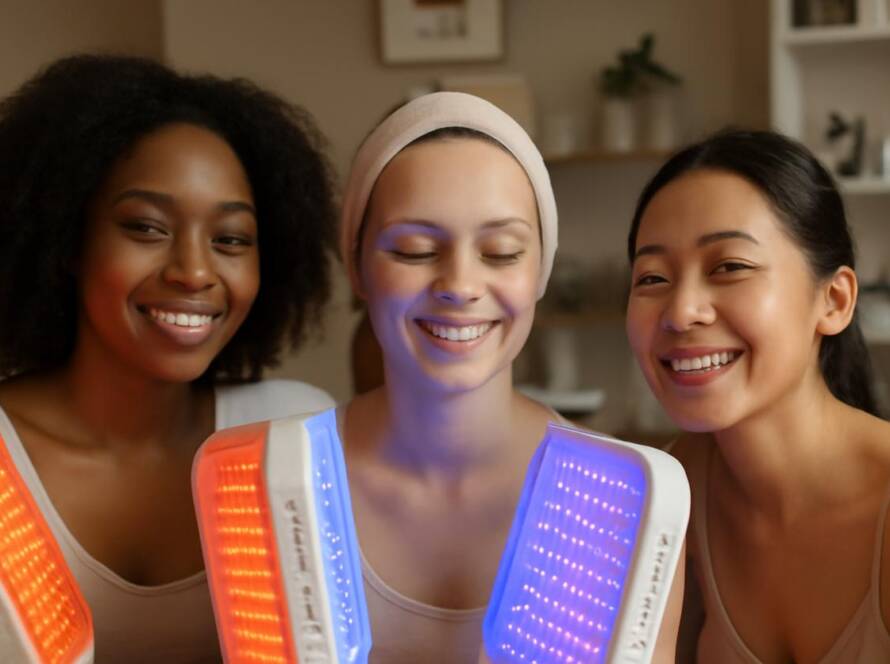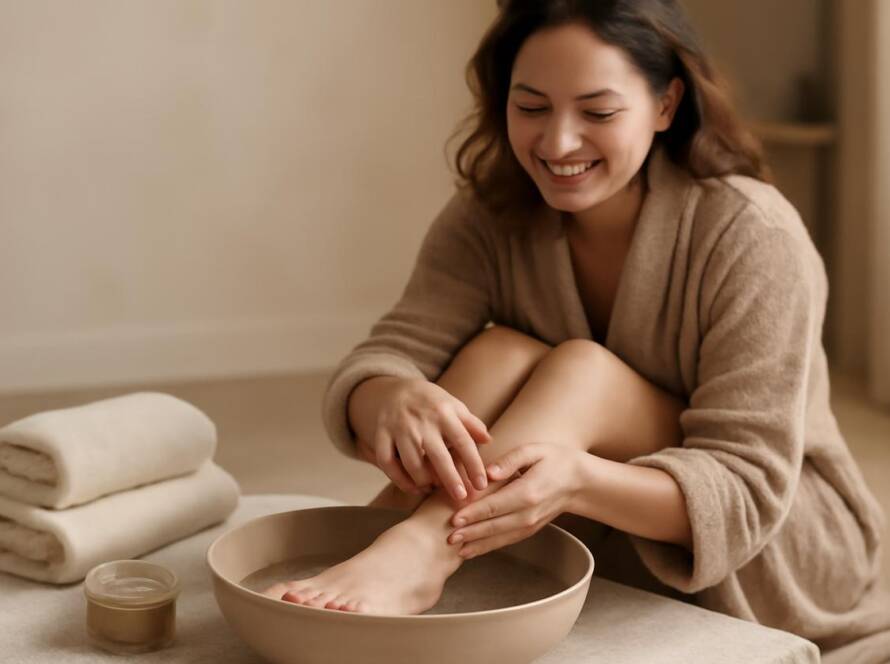Table of Contents
- Introduction — What a pedicure actually does for foot health
- Why regular foot care matters for mobility and skin health
- Safety first — When to consult a professional
- At-home pedicure essentials and sanitation checklist
- Step-by-step at-home pedicure routine
- Troubleshooting common concerns
- Natural products and ingredients to consider
- Building a weekly and monthly foot care plan
- Pedicure myths and surprising truths
- Final checklist and quick routine for busy people
- References and further reading
Introduction — What a pedicure actually does for foot health
When you hear the word pedicure, you might immediately think of colorful nail polish and a relaxing salon visit. While that’s part of the appeal, a true pedicure is much more than a cosmetic treatment. It is a comprehensive therapeutic care for your feet. Think of it as essential maintenance for one of the hardest-working parts of your body. A proper pedicure involves cleaning and removing dead skin cells, shaping nails, and caring for your cuticles to prevent nail diseases and disorders. More importantly, it helps you spot potential issues like corns, calluses, and fungal infections early on, making it a cornerstone of long-term foot health and comfort.
Why regular foot care matters for mobility and skin health
Our feet are our foundation. They carry our entire body weight, absorb shock with every step, and are critical to our overall mobility. Neglecting them can lead to a cascade of problems. Regular foot care, including a consistent pedicure routine, is vital for several reasons:
- Prevents Infections: Clipping, cleaning, and caring for toenails prevents them from growing inward and causing infections. Removing bacteria and fungi from your feet is a critical part of a pedicure.
- Promotes Healthy Skin: Exfoliating and moisturizing during a pedicure removes dead skin cells, which prevents the formation of painful calluses and cracks. Healthy, hydrated skin is a better barrier against bacteria.
- Aids Mobility: When your feet are healthy and pain-free, you are more likely to stay active. Issues like ingrown toenails, thick calluses, or bunions can alter your gait, leading to knee, hip, and back pain. A good pedicure routine helps manage these issues.
* Improves Circulation: The massage component of a pedicure is not just for relaxation. It stimulates blood flow in your feet, which can reduce pain and help distribute heat during colder months.
When to consult a professional
While an at-home pedicure is a wonderful and sustainable practice for most people, there are times when it’s crucial to seek professional care from a podiatrist or a medical pedicurist. DIY foot care can be risky if you have certain health conditions. Please consult a doctor or podiatrist before performing an at-home pedicure if you have:
- Diabetes: People with diabetes often have reduced circulation and nerve sensation in their feet (neuropathy). A small cut can go unnoticed and develop into a serious infection.
- Poor Circulation: Conditions like peripheral artery disease (PAD) can impair blood flow, making it difficult for foot injuries to heal.
- Severe Ingrown Toenails: If a toenail is deeply ingrown, red, swollen, or discharging pus, do not attempt to fix it yourself. This requires professional medical attention.
- Warts or Lesions: Any unusual growths, warts (especially plantar warts), or open sores on your feet should be evaluated by a healthcare provider.
For more general information on when to seek professional help, explore podiatry resources from the American Podiatric Medical Association.
At-home pedicure essentials and sanitation checklist
Creating a salon-quality experience at home starts with the right tools and, most importantly, proper hygiene. Sharing tools without sterilizing them can spread bacteria and fungal infections. Invest in your own set of high-quality tools and keep them clean.
Tools to have and how to clean them
- Nail Clippers: Choose a sturdy, sharp pair made of stainless steel.
- Nail File or Emery Board: For smoothing and shaping nails after trimming.
- Cuticle Pusher: A wooden or rubber-tipped one is gentler than metal.
- Pumice Stone or Foot File: For gently sloughing off calluses and rough skin.
- Foot Basin: A simple tub or basin large enough for both feet.
- Towel: A clean, soft towel dedicated to your pedicure.
- Moisturizer: A thick, rich cream or oil for foot hydration.
Sanitation Checklist:
- Before Use: Wash all non-porous tools (clippers, cuticle pusher) with soap and hot water. Then, wipe them down with a cotton ball soaked in at least 70% isopropyl alcohol and let them air dry completely.
- After Use: Repeat the cleaning and sanitizing process immediately after your pedicure.
- Porous Tools: Emery boards and pumice stones can harbor bacteria. Clean your pumice stone with a brush, soap, and water. Let it dry completely. Replace emery boards regularly.
- Personal Use Only: Never share your pedicure tools with anyone else.
Step-by-step at-home pedicure routine
Set aside 30-45 minutes to give your feet the attention they deserve. This routine focuses on health and sustainability, ensuring your feet feel as good as they look.
Soaking and gentle exfoliation
The first step in any good pedicure is the soak. It softens the skin and nails, making them easier to work with. Fill your foot basin with warm (not hot) water. You can add a handful of Epsom salts or a few drops of a calming essential oil like lavender. Soak your feet for 10-15 minutes. After soaking, use a pumice stone or a gentle foot file on heels, balls of your feet, and any other rough patches. Use gentle pressure in a circular or back-and-forth motion. The goal is to remove dead skin, not raw skin.
Nail trimming and shaping techniques
Proper nail trimming is key to preventing painful ingrown toenails. Always use a clean, sharp nail clipper. Follow these steps:
- Cut Straight Across: Unlike fingernails, you should trim your toenails straight across. Do not curve the edges.
- Keep Them at a Proper Length: The top of your nail should be even with the tip of your toe. Cutting them too short can lead to ingrown nails or infection.
- File Gently: Use a nail file to slightly soften the sharp corners. File in one direction to prevent splitting.
For more details on best practices, the American Academy of Dermatology Association offers excellent guidance.
Cuticle care without damage
The cuticle is a natural barrier that protects your nail matrix from bacteria. You should never cut your cuticles. Instead, after your soak, apply a bit of cuticle oil or moisturizer to the base of each toenail. Then, use a wooden or rubber-tipped cuticle pusher to gently push them back. This creates a clean look without compromising the health of your nails.
Moisturizing and massage for circulation
The final step of your pedicure is hydration and massage. Dry your feet thoroughly, especially between the toes. Apply a generous amount of a thick foot cream or natural oil like coconut or almond oil. Massage the lotion into your feet, applying firm pressure to the arches, heels, and balls of your feet. This not only moisturizes the skin but also boosts circulation and relieves tension.
Troubleshooting common concerns
Even with regular care, you might encounter some common foot issues. Knowing how to handle them safely is key.
Handling thick nails and calluses safely
Thickened toenails can be caused by aging, injury, or fungus. If they are difficult to trim, try filing them down gently with an emery board after soaking. For stubborn calluses, consistency is more effective than aggression. Use a pumice stone a few times a week rather than trying to remove the entire callus in one pedicure session. Avoid using callus shavers or graters, which can easily cause injury and infection.
Signs of fungal infections and when to seek help
Nail fungus (onychomycosis) is a common condition. Be on the lookout for nails that are yellow, brittle, crumbly, or distorted in shape. You might also notice a slightly foul odor. While some over-the-counter treatments exist, it is best to consult a doctor for an accurate diagnosis and effective treatment plan. The Centers for Disease Control and Prevention provides comprehensive information on toenail fungus.
Natural products and ingredients to consider
You don’t need expensive products for an effective at-home pedicure. Many beneficial ingredients are likely already in your kitchen pantry:
- Epsom Salt: Great for soaking, as it can help soothe sore muscles and reduce inflammation.
- Coconut Oil: An excellent natural moisturizer with antimicrobial properties. Perfect for a post-pedicure massage.
- Oatmeal: Ground oatmeal can be used to create a gentle exfoliating scrub for sensitive skin.
* Apple Cider Vinegar: A diluted ACV soak (one part vinegar to two parts water) can help with foot odor and has antifungal properties.
Building a weekly and monthly foot care plan
Consistency is the secret to lasting foot health. Looking ahead to 2025 and beyond, the focus is on creating sustainable wellness routines. A simple pedicure plan can make a huge difference. Use this table as a guide to build your habit.
| Frequency | Task | Purpose |
|---|---|---|
| Daily | Wash and dry feet thoroughly. | Prevents fungal growth and odor. |
| Weekly | Moisturize deeply and check for issues. | Maintains skin hydration and allows for early detection of problems. |
| Bi-Weekly | Perform a mini-pedicure: soak, gentle exfoliation, nail filing. | Keeps calluses at bay and nails in good shape. |
| Monthly | Perform a full pedicure: soak, exfoliate, trim nails, cuticle care, massage. | Comprehensive maintenance for overall foot health. |
Pedicure myths and surprising truths
- Myth: Cutting a “V” in the nail will fix an ingrown toenail. Truth: This is an old wives’ tale that does not work and can actually make the problem worse by creating an irregular nail edge.
- Myth: You must cut your cuticles for a clean look. Truth: Cutting cuticles removes a vital protective barrier, increasing your risk of infection. Pushing them back gently is much safer.
- Myth: Foot soaks can “detox” your body. Truth: While a warm soak feels amazing and softens skin, there is no scientific evidence that it pulls toxins from your body. Its benefits are for the skin and muscles of the feet themselves.
Final checklist and quick routine for busy people
No time for a full pedicure? No problem. A 10-minute routine can keep your feet in great shape.
Quick Routine Checklist:
- Scrub feet with a pumice stone in the shower (2 minutes).
- Dry feet thoroughly, especially between toes (1 minute).
- Trim any nails that are too long, cutting straight across (2 minutes).
- Apply a generous amount of foot cream and massage it in (3 minutes).
- Put on a pair of cotton socks to lock in the moisture.
This quick maintenance will make your monthly full pedicure easier and more effective.
References and further reading
For more detailed and expert-backed information on foot health and pedicure safety, please consult these reputable sources:
- Pedicure best practices from the American Academy of Dermatology Association
- General foot care guidance from the National Health Service (NHS)
- Toenail fungus information from the Centers for Disease Control and Prevention (CDC)
- Podiatry resources from the American Podiatric Medical Association (APMA)



